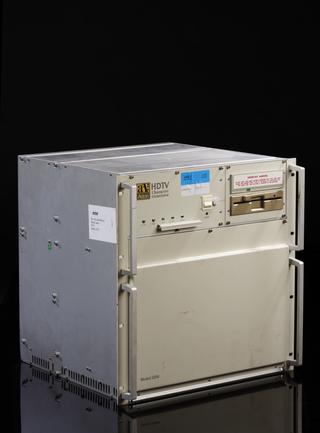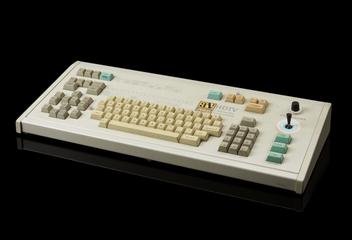
Aston Broadcast Systems 1969
- occupation:
- Manufacturer
- Nationality:
- British
- born in:
- Aston, Borough of Birmingham, West Midlands, England, United Kingdom
Established by two men, Dennis Jones, a former employee at EMI, and a former partner of a two-man firm in Aston, Birmingham that manufactured digital Sync Pulse Generators for Closed-circuit television systems. The business was called Aston Micro-Electronics. However, the partner died within months which led Jones to continue the company on his own from his home in Camberley, Surrey. Following requests for unavailable products, Jones' friend and neighbour, Laurie Mayhead, agreed to design new television equipment that Jones would manufacture.
London Weekend Television approached the franchise and asked Jones to acquire 2000 PO-type jack sockets for their audio systems. Jones, with the help of his family and a local metalworker, produced over 7000 of these jack sockets for London Weekend Television, and then for the BBC and other customers. Jones was encouraged to expand the business and bought buildings in Pirbright, Surrey, and Mayhead decided to join Jones as a partner in the business. They changed the name of the business to Aston Electronic Developments Ltd, and established a separate business called Aston Electronic Designs Ltd which Mayhead led.
The BBC approached them again to ask for another 25,000 jack sockets which led to Aston selling around 100,000 jack sockets every year for the next few years. As well as this, the company focused on manufacturing lamp sockets for Plessey, and Aston Electronic Designs Ltd pursued sub-contract wiring.
In 1971, John Holton joined the company who encouraged them to move away from jack socket manufacture, which was transferred to Mosses & Mitchell Ltd, and instead focus on the growing and profitable television industry. This promoted further expansion, moving to Deepcut, Surrey, and they returned to the Sync Pulse Generator, re-designed by Mayhead and given the name SPG5. Then, they were approached by an entrepreneur who asked them to design a teleciné which would allow home-viewing of films on television sets. They designed a small and cheap machine which allowed them to enter this new field of design.
Following continued success, the two companies decided to join forces with Mayhead taking care of research, development and production, and Jones heading sales and finance. This fell under Aston Electronic Developments Ltd, with Aston Electronic Designs Ltd lying dormant. After success at making the VNG1, a Television Number Generator, they developed the VCG1, the first Video Character Generator with help from Laurie Atkin. This was demonstrated to the BBC who were very impressed with the device and hired the only two prototypes available to cover the 1974 General Election. As Jones and Mayhead were the only people who knew how to operate the device, they oversaw the use of it during this event. This earned them some great exposure and their popularity instantly grew.
The Video Character Generators became synonymous with Aston and soon they were simply referred to as 'Astons'. New models were all called 'Aston' with a number for their version. The Aston 2, released in 1980, and the Aston 3, released in 1981, sold in their thousands to 50 countries. The Aston 4 was released in 1985 and was the last to be named in this way. The fifth Character Generator was called Motif which was launched in 1991 and there followed a range of the Motif character generators. The final of this range was the Motif XL released in 1995. The Motif range were very successful in Germany, supplying most major regional broadcasters.
Jones and Mayhead retired in the 1990s and in 1997, the company entered new ownership with Mike Clarke and Peter Radford. They replaced the Motif range with a new improved range called 'ViVid' and continued the company’s success. In 2001, Aston became a wholly owned subsidiary of the Softel Broadcast Equipment Group and began producing graphics products. In 2009, Softel sold Aston, then called Aston Broadcast, to Brainstorm Multimedia under whom the company still operates.
